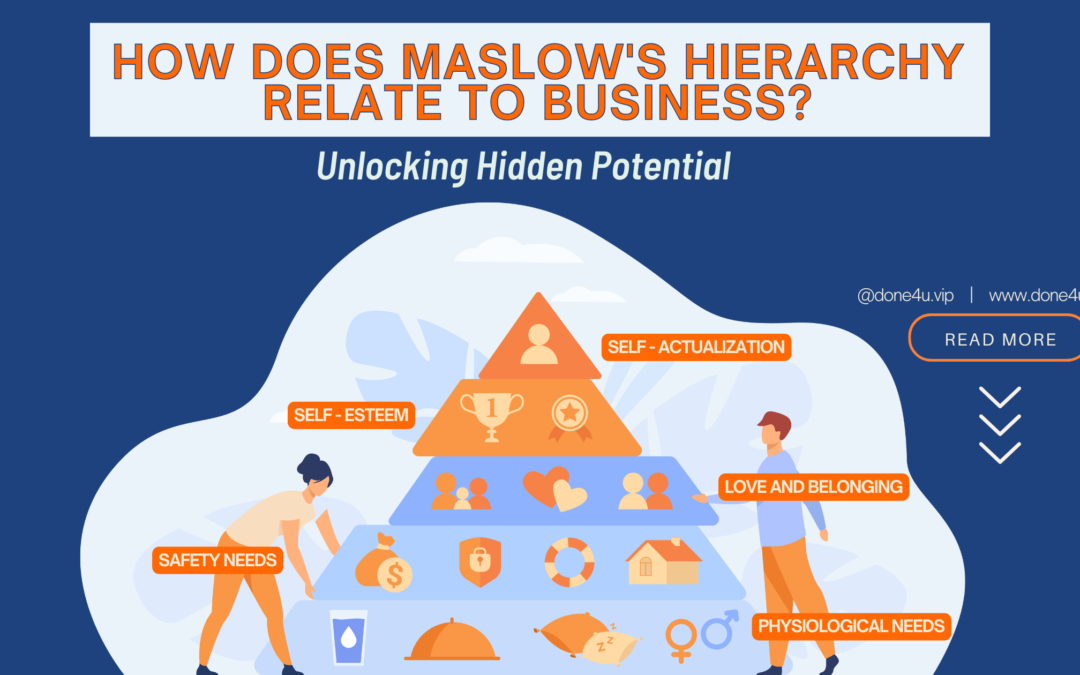How does Maslow’s Hierarchy relate to business? Its principles can help you understand what drives people at work. It shows the needs we all have, from basic stuff like food and safety to feeling good about ourselves.
As a business owner, you can use this idea to make your workers happier. When you meet your employees’ needs at each level of Maslow’s hierarchy, they feel more motivated and do better work. This can make your business run smoother and grow faster.
Think about where you are in your own business journey. Are you still working on the basics, like making enough money to pay the bills? Or are you at a higher level, looking for ways to make a big impact? Knowing this can help you set goals and make smart choices for your company.
Understanding Maslow’s Hierarchy
Maslow’s hierarchy outlines five levels of human needs. This model shows how different needs motivate people and how they apply to work settings.
Fundamentals of the Hierarchy
Maslow’s hierarchy of needs is a five-tier model of human needs. It starts with basic needs and moves up to more complex ones. The levels are:
- Physiological needs (food, water, shelter)
- Safety needs
- Love and belonging
- Esteem
- Self-actualization
These needs build on each other. You must meet lower needs before moving to higher ones. For example, it’s hard to focus on friendship if you’re hungry or don’t feel safe.
Maslow’s Hierarchy in the Workplace
In business, Maslow’s ideas help explain what drives workers. Basic needs in a job include fair pay and a safe work area. These match the lower levels of the hierarchy.
Higher needs at work might include:
- Feeling part of a team (belonging)
- Getting praise for good work (esteem)
- Having chances to grow and be creative (self-actualization)
When you meet these needs, workers are often happier and more productive. Smart bosses use this idea to create better workplaces. They make sure all levels of needs are addressed, from fair pay to growth chances.
Applying Maslow’s Principles to Business Strategy
Maslow’s hierarchy can help you shape your business strategy as you grow. Each level of the pyramid offers insights into what you can focus on to meet the needs of your company, employees, and customers.
Physiological Needs Met
At the most basic level, your business needs to survive. This means making enough money to keep the lights on and pay your bills. You might focus on:
- Simple marketing through one main channel
- Basic sales process
- Straightforward product or service delivery
- Comfortable work environment
As a new business owner, you’re likely wearing many hats. Your goal is to establish a steady income stream. This stage is about building a foundation for future growth.
Safety Needs
Once your business is stable, you can look at making it more secure. This might involve:
- Setting up emergency funds
- Creating backup systems
- Improving cybersecurity
- Treating others respectfully
You may also focus on job security for your employees. Offer steady work hours and clear expectations. This helps build trust and loyalty in your team.
Love and Belonging
As your business grows, you can build stronger connections. This applies to your team, customers, and the wider community. Try these ideas:
- Host team-building events
- Create a customer loyalty program
- Join local business groups
Building these relationships can lead to a more engaged workforce and loyal customer base. It’s about creating a sense of community around your brand.
Esteem
At this level, you’re looking to boost your business’s reputation and standing and encourage esteem within your organization. You might:
- Seek industry awards or certifications
- Encourage employee development and recognition
- Share customer success stories
This stage is about building pride in your brand, both internally and externally. It can help attract and keep top talent and high-value customers.
Self-actualization
At the peak of the hierarchy, your business is reaching its full potential. You might focus on:
- Innovation and creative problem-solving
- Giving back to the community
- Setting industry trends
This is where you can make a real difference in your field. You’re not just running a business; you’re changing the game. It’s about leaving a lasting impact and fulfilling your company’s ultimate vision.
Conclusion: How Does Maslow’s Hierarchy Relate To Business?
Maslow’s hierarchy gives you a helpful framework for understanding employee needs. By addressing each level, you can create a more motivated and productive workforce.
Start with the basics. Make sure your team has fair pay, safe working conditions, and job security. This builds a strong foundation.
Then focus on belonging. Foster teamwork and social connections among coworkers. Help people feel like they fit in.
Next, boost esteem. Recognize good work and give opportunities for growth. Let employees know they’re valued.
Finally, enable self-actualization in the workplace. Provide chances for creativity and reaching full potential.
Remember, needs vary for each person. Stay flexible and attentive to individual differences.
So, how does Maslow’s Hierarchy relate to business? By applying Maslow’s ideas, you can build a more engaged team. This leads to better results for your business. Keep these concepts in mind as you manage and lead others.


